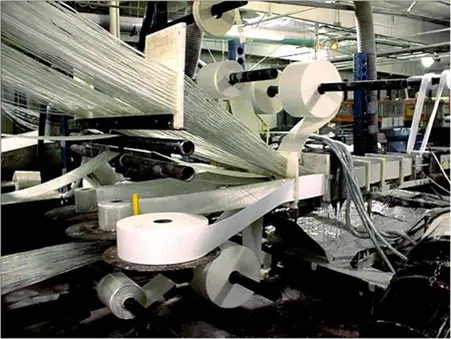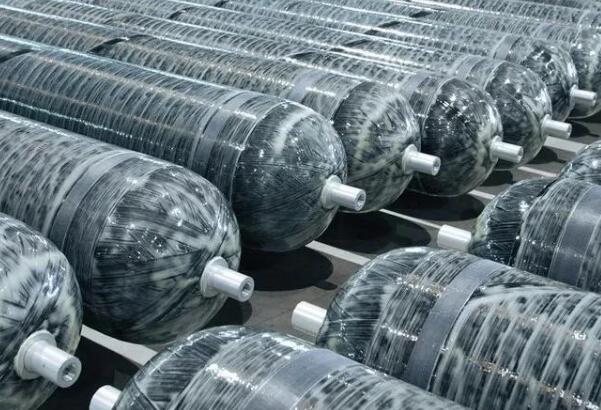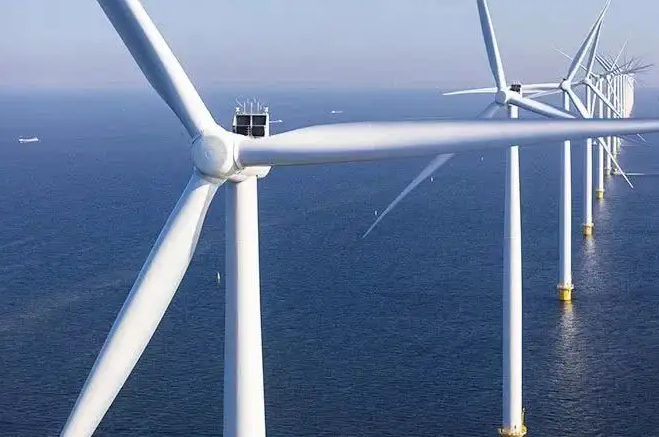The application of epoxy resin in construction mainly includes the following aspects: first, floor coating, second, building corrosion prevention, and third, structural reinforcement. Regarding floor coating, the most commonly used film-forming material is epoxy resin, the synthetic resin type material represented by epoxy resin; the coating is generally divided into solvent-free, solvent-based and water-soluble type, etc. Solvent-based system has solvent volatilization, small viscosity of coating, low solid content, thin film at one time, easy to occur during construction and other defects such as floating color film-forming material is weak; solvent-free system because it does not contain non-active solvent, solid content can be adjusted to nearly 100%, thick film at one time, construction will not appear benard nest and floating color; water-soluble clean wear-resistant ground coating has good adhesion to wet substrate. About building corrosion prevention, due to the role of acids, alkalis, salts and organic solvents and other media, building materials produce different degrees, all kinds of physical and chemical damage, this corrosion process is generally slow, short-term does not show the consequences, once caused by the harm is quite serious. In the construction of epoxy resin corrosion prevention, commonly used material products include resin cement, resin mortar, glass fiber reinforced plastic and resin glass scale, etc. Resin cement, resin mortar and resin glass scale are made of resin as curing agent, toughening agent (some materials need to add accelerator or diluent), and powder, fine aggregate, coarse aggregate, and treated glass scale. Regarding structural strengthening, concrete and reinforced concrete structures often suffer different damages and affect their service life due to various factors during use. Epoxy resin made of epoxy adhesive has superior performance and more modified ways, and is mostly used for bonding of concrete components, and repair, bridge engineering, airstrip, highway repair, concrete structure crack reinforcement or leak prevention and grouting.
The new development of concrete structural reinforcement technology – carbon fiber reinforcement technology.
Carbon fiber structural reinforcement technology is a new technology of reinforced concrete structure reinforcement, which has been matured and widely recognized in foreign countries. It was first introduced in China by Beijing Teshida Technology Co. In the past few years, the Division has been cooperating with universities and scientific research units, and after digestion and absorption, this technology has been successfully applied in many projects in many provinces and cities in China. Now it has formed the situation that there is a word of mouth, users pass on to each other and new users keep coming to our door. It is obvious that it will make the new development of concrete structural reinforcement technology in China, just like abroad. But why does it form a new trend of structural reinforcement technology? What are its basic principles and methods? All these must be said from the traditional reinforcement methods.
(A) Damage to concrete structures and traditional methods of reinforcement
Concrete structures have been built for many reasons, there are several aspects: 1. Poor design, construction defects: such problems should be avoided, but can not be eliminated, and in recent years for a variety of reasons, some very serious. 2. Ageing: since the founding of the country and the reform and opening up since the large-scale construction of the project is approaching the life cycle in batches, and even overdue service. 3. Corrosion: acid, alkali, salt attack, weathering, water infiltration, freeze-thaw cycle. 4. Accidental disasters: earthquakes, typhoons, flooding, man-made impact, fire and other damage. 5. Overload. The above causes directly lead to concrete chalking, loosening, spalling, cracking and corrosion of reinforcement. Make the structure crack expansion, stiffness reduction, deflection increase, load-bearing capacity weakening or even loss. So that the structure is involved in dangerous service, serious unbearable reuse.
Starting from the new century, there will be a wave of structural repair and reinforcement in China, and it will even last for a long time. In the past, the traditional reinforcement methods often used are mainly the increased section method, the in vitro prestressing method and the outsourcing steel plate method. The enlarged section method is also known as the external cladding concrete method. The main purpose is to widen, thicken and heighten the cross-section to accommodate the additional reinforcement. This method is very effective but increases the volume and weight of the structure, resulting in fat beams and columns, numerous construction processes, labor, long construction period, and the use of large machinery, but also must have a large construction space. In vitro prestressing method is to add tensioned chords under the beam, and the column together to form the anti-arch frame, the reinforcement effect is good, but also has the above-mentioned disadvantages, especially the height of the structure increases a lot. In addition to the above-mentioned defects, it is difficult to adhere to the surface of the original structure, and it is not resistant to corrosion and must be rust-proofed regularly. Therefore, the application of traditional reinforcement methods are subject to various restrictions, and even under certain conditions cannot be used.
(B) Carbon fiber reinforcement method
The basic material of carbon fiber reinforcement is the high strength, or high elastic modulus of continuous carbon fiber one-way arrangement into a bundle, impregnated with epoxy resin to form a carbon fiber reinforced composite materials (Carbon Fiber Reinforced Plastics or polymer, referred to as CFRP). The sheet is pasted on the tensile surface of the structure with specially formulated epoxy resin, and after the resin is cured, it forms a new force-bearing composite with the original structure, and the carbon fiber sheet can be stressed together with the steel. As the carbon fiber sheet shares the load, it reduces the stress of the reinforcement, and the structure is reinforced and strengthened.
The tensile strength of high-strength carbon fiber sheet can reach 3400N/mm2, which is 7-10 times higher than steel. The modulus of elasticity is 2.35×105N/mm2 to 3.8×105N/mm2, which is similar to or slightly higher than that of steel. Therefore, it has good performance of working together with steel bars. Due to the use of different ratios and different properties of epoxy resin material, it can make the interface resin penetrate into the concrete, and the sheet is pasted closely with the shape of the member, and the resin material for pasting has high bond strength, which can effectively transfer the stress between the two materials of carbon fiber sheet and concrete, and ensure no bond peeling of the interface. The application of carbon fiber reinforcement in traffic and construction projects is shown in the figure.
The applications of FRP in traffic and construction engineering are mainly as follows:
- Beam and plate structural reinforcement of various types of highway, railroad bridges, bridge plates and building beams and plates can be applied.
(1) Flexural reinforcement. Carbon fiber sheet is pasted on the tensile side, i.e. the lower part of the span and the upper part of the continuous plate, continuous beam, cantilever plate and beam support, along the direction of the stressing tendons. As the modulus of elasticity of carbon fiber sheet is slightly larger than that of steel reinforcement, and the elongation is smaller than that of steel reinforcement when it is stressed, it is stressed first when the structure is stressed, and when the load gradually increases to reach the coordination of the two deformations, the two are jointly stressed and distributed according to a certain proportion. Often before the reinforcement or due to corrosion of the original reinforcement caused by insufficient cross-sectional area, or due to overload of the original reinforcement stress is too large, after the reinforcement of carbon fiber share the tension, so that the stress of the reinforcement is greatly reduced, the structural load-bearing capacity can be improved. Flexural reinforcement can be applied from one to multiple layers according to the need of stress. High elastic modulus sheet can also be applied, the reinforcement effect is more significant.
(2) Shear reinforcement. Usually in the area with high main tensile stress near the end of the beam, and in the area with sub-beams or large concentrated loads. The reinforcement is vertically pasted on both sides of the beam, or with the bottom of the beam to form a U-shaped ring package. It is equivalent to increase the shear resistance hoop to share the shear force of the original hoop.
(3) Anti-fatigue reinforcement. Industrial plant crane beams, bridges and bridge decks can be pasted with carbon fiber sheets to improve the fatigue resistance of the structure. Bridge deck plate up and down at the same time paste the effect is better.
- Column and pier reinforcement
For bridge piers, elevated columns, independent columns and winged columns of buildings, they can be effectively reinforced. The main performance is as follows:
(1) The center of the compressive column reinforcement, with carbon fiber in the middle of the column transverse ring package, in the compressive area to produce circumferential binding effect, can improve the compressive capacity, reduce the pressure yield coefficient of the column.
(2) Eccentric compression column, in the side of the column subject to tensile bending along the column axis longitudinal paste, can be effective reinforcement.
(3) Seismic performance reinforcement, under the action of transverse force of earthquake or typhoon, column end bending moment and shear force are very large, can be longitudinal paste and ring package at the same time. Both improve the column and pier transverse resistance, and improve the energy absorption performance, improve the ductility of the structure, so that the structure resistance to lateral force significantly improved.
For the building frame structure and bridge piers and elevated columns with cap beam rigid junction, the upper and lower ends of the columns can be reinforced at the same time, and for those with weak transverse restraint at the upper end, only the lower end can be considered.
- Shear wall reinforcement, in the shear wall on one side or both sides along the direction of shear reinforcement paste carbon fiber sheet.
- Towering structures, such as chimneys, water towers, silos, high-pole light stands, etc., the force situation is similar to the pier column, the reinforcement method is similar.
- Ring-shaped stress structure, such as pools, tanks, tension-resistant side walls, can be wrapped and pasted on one side or both sides.
- Culverts, tunnels and lining, due to uneven ring pressure caused by the cross-sectional stress in all directions of abnormal and longitudinal tension cracks, and even lining spalling, as well as due to uneven settlement of the foundation caused by longitudinal dislocation, can take the concrete local filling, replacement, and carbon fiber sheet reinforcement joint application method.
- Closing and protection function. Paste with carbon fiber sheet can be sealed structure cracks, wider and deeper cracks can also be sealed with epoxy resin grouting before patching, so as to control the further expansion of cracks and prevent moisture infiltration caused by corrosion of reinforcement, but also has the effect of enhancing corrosion resistance. This is in the structure of the reinforcement at the same time, but also brings the side effect of sealing and protection.
On the contrary, some of the damage but the load-bearing capacity has not been reduced structure, can also be closed and protective maintenance as the main effect, but also the side effect of structural reinforcement.
The above-mentioned kinds of reinforcement account for most of the structural reinforcement of bridges and beams of general buildings, followed by the seismic reinforcement of bridge piers and columns, and only a small part of other structural reinforcement. However, they have been widely used, researched and tested in foreign countries. In Japan, there are design and construction specifications prepared by the Ministry of Construction or various organizations for various reinforcement technologies. In China, Beijing Teshida has been successfully applied in more than 20 projects, and has also prepared enterprise work methods and specifications. For the carbon fiber reinforcement technology that has been matured in foreign countries, we have also successfully mastered and accumulated rich experience of practical application, and believe that it will play a powerful role in the new century.
(C) Superiority of carbon fiber reinforcement technology
In summary, the characteristics and superiority of carbon fiber reinforcement technology are summarized as follows:
- Excellent mechanical properties, can be effectively used in a variety of forms of structural reinforcement, including bending, shear, compression, fatigue, earthquake, wind, control the expansion of cracks and deflection, increase the ductility of the structure.
- Excellent chemical stability, so that the reinforced and repaired structure has a strong resistance to acid, alkali, salt, ultraviolet erosion and water resistance, and has sufficient ability to adapt to temperature changes. Easy to add fireproof coating after effective fire prevention. It can greatly enhance the adaptability of the structure to the harsh external environment and extend the life of the structure, which is incomparable to the method of steel cladding.
- The light weight and high strength of the material, can not increase the volume of the structure, the increased weight of the structure can be almost negligible. This can not be done by traditional methods.
- The construction process is simple and can be operated by small electric tools, unlike the traditional reinforcement method which requires many types of work, a lot of labor, large construction equipment and lifting machinery. Therefore, it can be implemented in the limited working space where the traditional technology cannot be constructed. Moreover, the progress is fast, the construction period is short, and it can be operated under the situation of continuous traffic with vibration. Thus, it can greatly shorten the time of project stoppage, stopping operation or breaking construction, and greatly reduce the economic loss and social impact.
- Since the material is soft, it is easy to paste with the shape of the structure and does not change the shape of the structure after reinforcement, and at the same time, it is easy to paint with the required color without showing the traces of reinforcement. As the superiority of carbon fiber reinforcement technology is generally recognized in the engineering field, the application of this technology will become more and more widespread. With the development of relevant scientific research, the accumulation of practical engineering experience, and the further exploration and development of new application areas, this technology will become more mature and more perfect.
More YQXPOLYMER Epoxy Resins information, please contact us via email: sales@yqxpolymer.com , or voice to us at: +86-28-8411-1861.
Some pictures and texts are reproduced from the Internet, and the copyright belongs to the original author. If there is any infringement, please contact us to delete.




